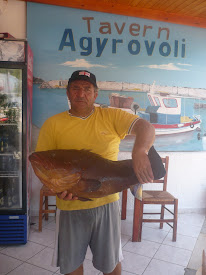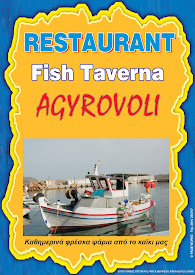Greece
A Foundation for the Culinary Arts
Throughout history, Greece has been a country that has repeatedly conquered and been conquered, creating a broad variety of cultural influences on its cuisine. The Greeks are credited with laying the foundation for the culinary arts. When the Byzantine Empire absorbed Greece in 330 BC, Balkan and Turkish influences blended into Greek cooking. In successive invasions, Slavs, Franks, Serbs, and Venetians introduced their culinary traditions. For more than 400 years, Greece was part of the Turkish Ottoman Empire. As a result, many classic Greek dishes still have Turkish names today.Research and recipes provided by Chef Mimi Rippee, Judy McCann and the Global Gourmet staff.
Greece is a meeting place between East and West, its cuisine mixing classical Mediterranean cooking with "oriental" influences from the Middle East. Greek food remains true to its roots, like ancient philosopher Epicurus' dictum to "live well and enjoy the simple things in life."


Greece
Menu Guide
Arni: LambAvgolemono: Rich egg and lemon sauce, but also name of traditional egg-lemon soup
Baklava: Nut pastry diamonds sweetened with honey-lemon syrup
Bourekakia: Savory appetizers made with filo sheets filled with of meat or vegetables
Dolmades: Grape leaves filled with meat and-or rice filling—also called Dolmas
Farina: Finely ground wheat flour used to make pasta, also used in cakes and custards
Fava: Beans that are eaten shelled or cooked in the pod
Feta: Pungent cheese made from sheep's milk
Filo: Paper thin pastry sheets—also called phyllo
Fournos: Traditional Greek clay oven
Garides: Shrimp
Grape Leaves: Tender leaves from grape vines used to wrap fillings and decorate platters of food
John Dory: Popular fish used in Greek food
Kafes: coffee
Kalamaria: squid
Kalamata: Classic Greek olive, kalamata oil also available
Kapari: Capers, pickled unopened flower buds from a Mediterranean bush
Kasseri: Creamy white cheese
Kafalotiri: Hard cheese used freshly grated
Khorta: Wild greens
Kourabiethes: Rich butter cookies topped with powdered sugar, sometimes flavored
Macaronia: Greek pasta
Mezethes: Appetizers—also called Meze
Mizithera: Cheese made from goat or sheep milk
Moussaka: Lamb and eggplant casserole
Orzo: Rice-shaped pasta
Ouzo: Anise-flavored liqueur
Pasta Flora: Pastry tart filled with cherry or apricot puree
Pastitsio: Pasta and lamb casserole topped with rich white sauce
Phillo: see Filo
Pilafi: Rice cooked with onions, seasoned with herbs, often served with nuts
Pita: Flatbread used to hold grilled meats or vegetables, or used with dips
Psari: Fish
Salata: Salad
Salatika: Green salad
Skorthalia: Garlic sauce made with almonds
Souvlakia: Skewered lamb
Spanakopeta: Flaky spinach pastry made with filo dough
Tahini: Sesame paste, often added to pureed chick peas
Tiropita: Flaky cheese-filled pastry made with filo dough
Greece
- Backgrounder
- What to Eat
- Greek Recipes
- Cucumbers and Yogurt Appetizer (Tzatziki)
- Spinach Pie (Spanakopita)
- Filo Dough (Phyllo)
- Easter Soup (Mageritsa)
- Egg-Lemon Soup (an alternative to Mageritsa)
- Roast Lamb
- Lamb on a Spit (Greek-style)
- Village Salad (Choriatiki Salata)
- Lettuce Salad (Maroulosalata)
- Green Beans in Oil (Fasolakia Prasina Ladera)
- Oven Roasted Potatoes (Patatess Fournou Ladorigani)
- Easter Cookies (Koulourakia Paschalina)
- Easter Bread (Tsoureki)
- Baklava
- "Heavy" Coffee (Kafes Varys Glykos)
- Baked Fish (Psaria Plaki)
- Bulgur Salad
- Chick Pea Puree (Hummus bi Tahina)
- Egg Lemon Sauce (Avgolemono Sauce)
- Egg Lemon Soup (Avgolemono)
- Feta Cheese Pastry (Tiropita)
- Honey-Dipped Cookies (Finikia)
- Lamb and Eggplant Casserole (Moussaka)
- Lamb and Pasta Casserole (Pastitsio)
- Meatballs (Keftedakia)
- Pork Kabobs (Souvlaki)
- Salad with Greens (Khorta Salatika)
- Spinach-Cheese Pastries (Spanakopetes)
- Stuffed Grape Leaves (Dolmathes)
- Tomato Salad
- Walnut Pastry (Baklava)
- Yogurt Cake (Yiaourtopitta Glykisma)
- Yogurt Cheese
- Yogurt Dip






















0 σχόλια:
Δημοσίευση σχολίου